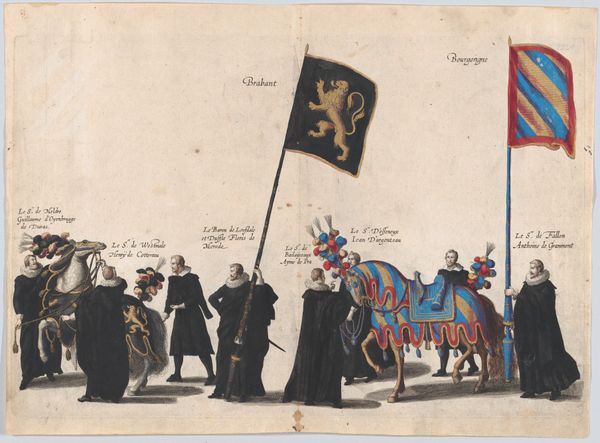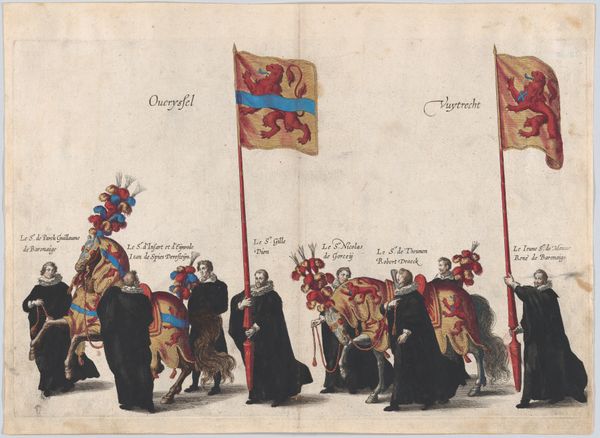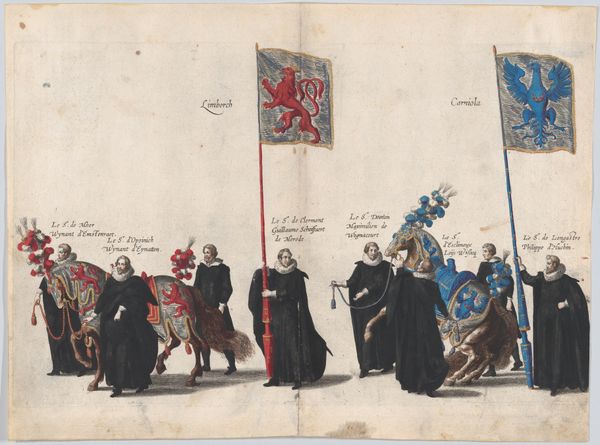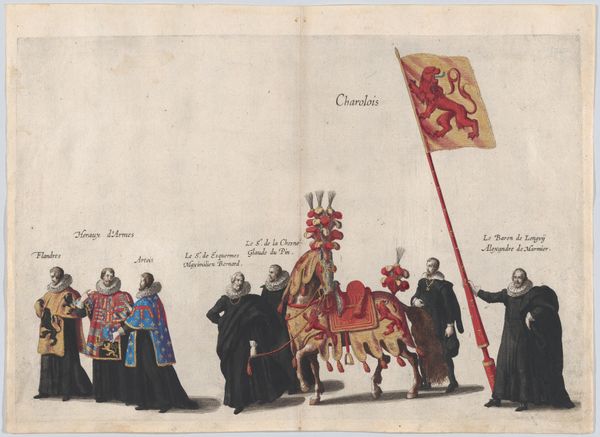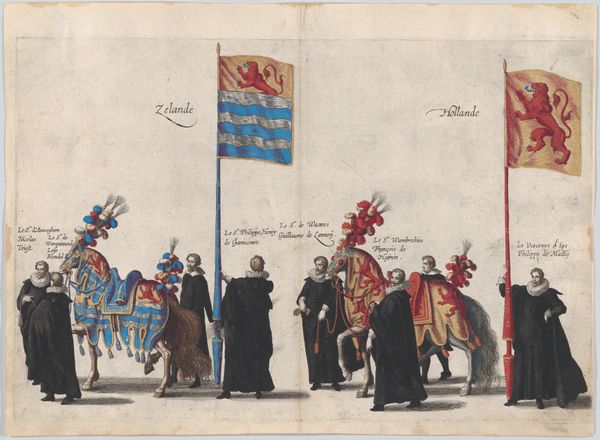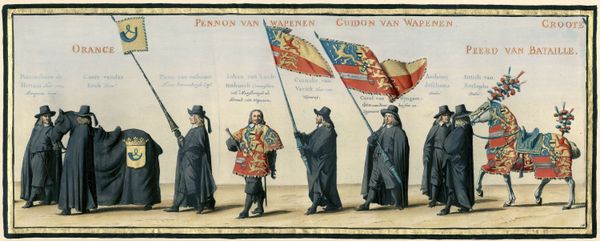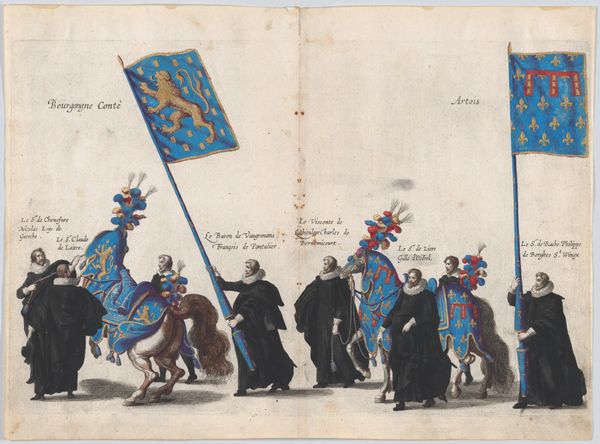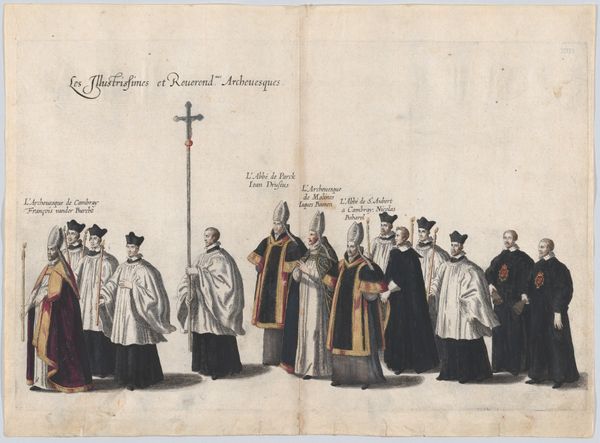
Plate 48: Men bearing arms and heraldic flags marching in the funeral procession of Archduke Albert of Austria; from 'Pompa Funebris ... Alberti Pii' 1623
0:00
0:00
drawing, print, engraving
#
drawing
#
allegory
#
baroque
# print
#
men
#
history-painting
#
engraving
Dimensions: Sheet: 11 1/4 × 15 3/16 in. (28.5 × 38.6 cm) Plate: 9 15/16 × 14 15/16 in. (25.2 × 38 cm)
Copyright: Public Domain
Editor: This print from 1623, titled "Plate 48: Men bearing arms and heraldic flags marching in the funeral procession of Archduke Albert of Austria," by Cornelis Galle I, is rendered in engraving. There’s such detail given to the heraldry and the clothing; the somber tone is striking. What do you see in this piece that stands out to you? Curator: What immediately captures my attention is the intense labor involved in producing these prints, and subsequently, in staging the actual funeral. Consider the paper itself – its cost, availability, the process of engraving the copper plate. Each line, each heraldic symbol meticulously etched, represents hours of skilled labor. Then, there's the social context; a funeral procession is itself a form of political theater. Editor: So you see it less as a memorial and more as… a statement? Curator: Exactly. Think of the flags, the weaponry. They’re not just decorative; they are products of industry and signifiers of power. What materials were used? Who produced them? Where were they manufactured? These are questions we should ask. Galle and the other artists became tools to disseminate this imagery and message. Editor: It makes you wonder about the economics of Baroque-era artistry. Was it purely patronage, or something more complex? Curator: Definitely complex! It’s a whole network: the paper makers, the ink suppliers, the metalworkers who produced the plates, and of course, the distributors of the prints themselves. Even the pigments used to add color – their origin, trade routes – speak volumes. These were global networks of production and consumption, masked by the grandeur of a funeral. Editor: So analyzing the materials and process almost deconstructs the idealized image of noble death. Curator: Precisely! It reveals the underbelly of production, labor, and the political motivations behind image making. The tangible aspects offer clues to understanding how power operated. Editor: I will look at art differently from now on. Considering all these material factors opens up a new understanding. Curator: Exactly, it moves our understanding from symbolism to that of consumption and dissemination in society.
Comments
No comments
Be the first to comment and join the conversation on the ultimate creative platform.


